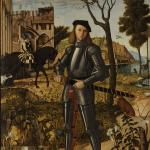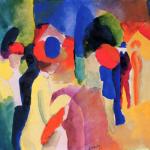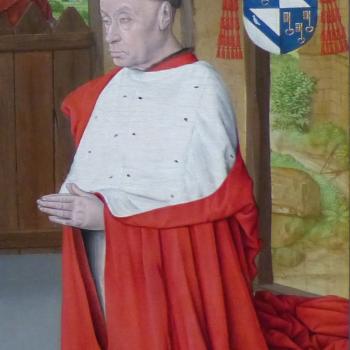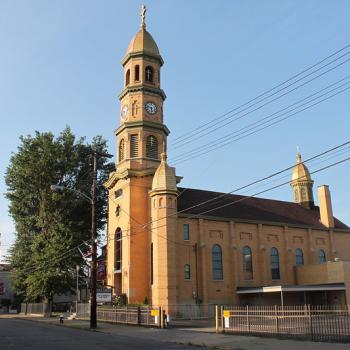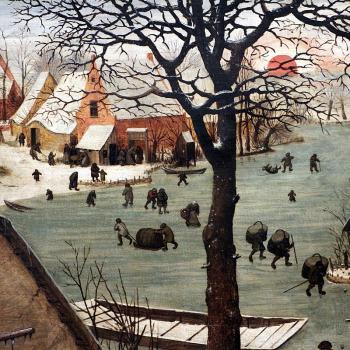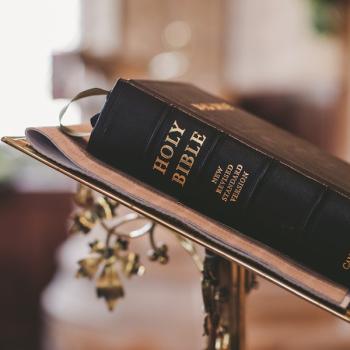Seemingly from the beginning, this letter was believed to be the handiwork of Michael Cerularius; this, at least, seems to have been the belief of both Cardinal Humbert and Pope Leo IX, though they give no evidence for it. In any event, whether he wrote it or not, Michael soon showed his agreement with the letter’s contents. A monk in Constantinople named Nicetas wrote a polemical work against the Westerners on similar topics (unleavened bread, the Sabbath, and the marriage of priests), and Cerularius sent a copy of it to the other Patriarchs. More importantly, however, Cerularius had all the Western Churches in Constantinople shut down by force, and drove the monks following Western customs out of their monasteries. In this repression, Humbert was later to accuse Cerularius of permitting his lieutenant to overturn the reserved Eucharist in these churches—consecrated in unleavened bread—and publicly trample on it. In one sense, of course, Cerularius was only doing what the Normans had done in Southern Italy; but in the view of many in the West, he was doing nothing less than declaring war on the entire Western Church.
It is not known precisely when in 1053 Leo IX read this letter, or heard of these events. By the time, however, that he took up his pen to respond, he was already being held captive by the Normans. Pope Leo’s letter is a remarkable document indeed, part hymn to ecclesiastical peace and unity, part harsh polemic against what Leo sees as Cerularius’ and Constantinople’s arrogance. Leo begins his letter with an extensive collage of Scriptural quotations on peace, culminating in Christ’s famous plea for unity from John 17: “that they may be one, Father, even as you and I are one” (John 17:21). In summing up the Scriptures on this topic, he presents an imagined message of Christ to the Church: “My brothers and co-heirs, I leave to you from our patrimony a portion, namely temporal peace; if you will present this to me uninjured and uncontaminated in the end, I will join to you my portion, namely eternal peace” (Leo I). Opposed to this, however, is “impious heresy[,] shamelessly longing for the separation and division of the inseparable and indivisible unity” (III) of the Church. The men who create and support heresies are “in all things more worthless than the soldiers who crucified the Lord of Glory” (II) – since the soldiers, as related in John 19, decided not to tear Christ’s earthly tunic out of admiration for its workmanship, while the heretics “sharpen their boastful and deceitful tongues to pierce the Church through […] valuing as nothing the garment compacted and woven by the […] Co-Eternal Wisdom of God the Father” (II). This seamless, heavenly garment of the Church, Pope Leo argues, is not the result of human understanding or human wisdom, since “he did not gather fishermen using rhetoricians and sophists, but using fishermen and simple men he fished for sophists and orators” (II).
Thus, a strong contrast is created between the Church and heresy, based on a few characteristics. The Church, according to Leo, is founded on peace and unity, a unity based, not on any human custom or conjecture, but on divine faith from God; heresy hates and destroys peace and unity, and bases itself not on divine tradition, but on human wisdom and argument, “since not only is human nature shouting and fighting against that unity, but also the conjecture of human wisdom” (III). Heresy, then, is a simple outgrowth of human nature’s tendency towards fragmentation and division, while the Church is a divine sign of unity in the midst of this. Leo gives as an image of the Church a Dove, while heresy is portrayed as a Raven, a bird that “feeds off the death or injury of others” (III). Concerning the Dove, Leo quotes a verse from the Song of Solomon: “One is my Dove, my perfect one, my immaculate one” (Song 6:9) and applies these characteristics to the Church: “For she who is always called one, and is, never is divided or severed; she who is always called perfect (that is, full), never is diminished or made empty; she who is always called immaculate, never is corrupted or stained” (III). Thus, even when heretics leave the Church, the Church is not wounded, but remains perfect and complete nevertheless. At the same time, though, those that seem visibly to be separated from the Church can still be mystically united to her: “And if they seem for a time plucked away or cut off, those who are thought to be out of doors, and to wander, yet because “God knows who are his” (2 Timothy 2:19), through his predestination they are within without error” (III).
After presenting this picture, Leo proceeds to a long and poetic prayer to Christ for the unity of the Church, again weaving together multiple layers of Scriptural imagery to make his point. Heretics now are “wild beasts of the reed” (Psalm 68:31), and the “congregation of bulls” (ibid), whereas the teachers of the Church are those just men who “will shine forth, and just like sparks will run in the reed-thicket” (Wisdom 3:7), burning it to the ground. Likewise, the sons of the Church are silver and gold purified in fire, while heretics are that chaff that is burned in the furnace, “since gold is not purified if chaff is not burned” (IV).


